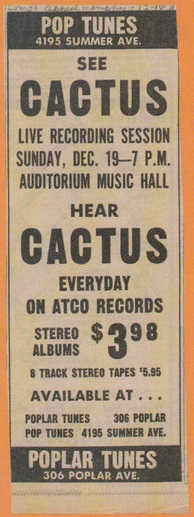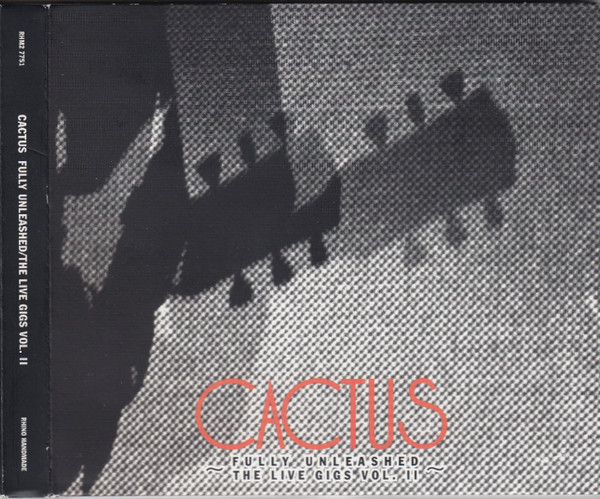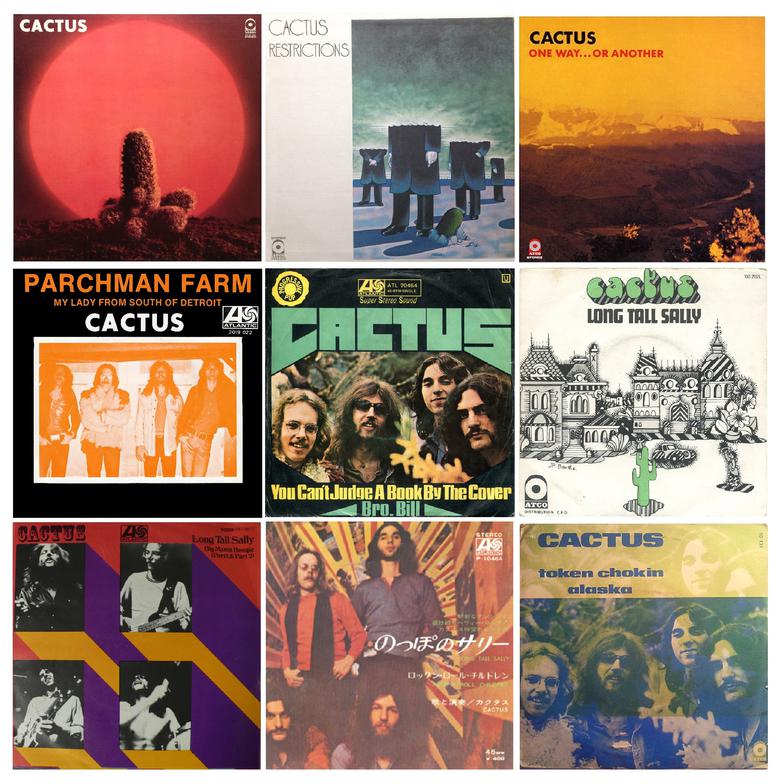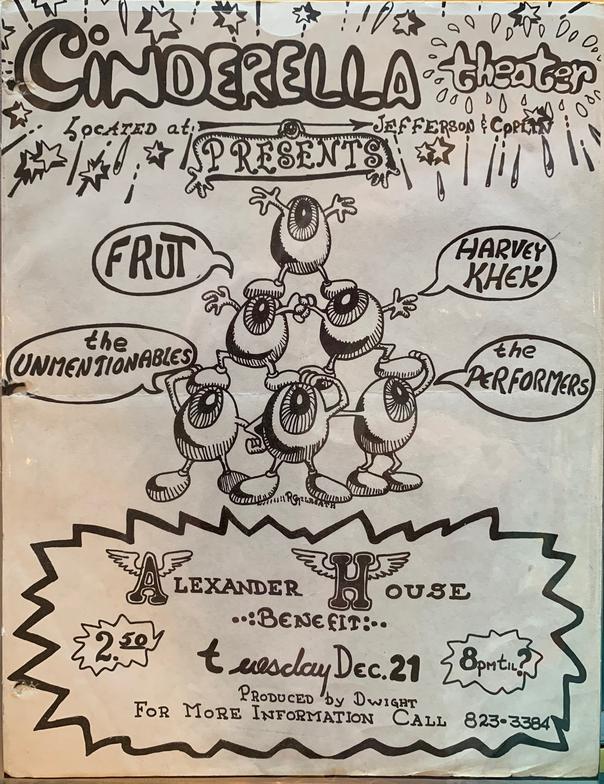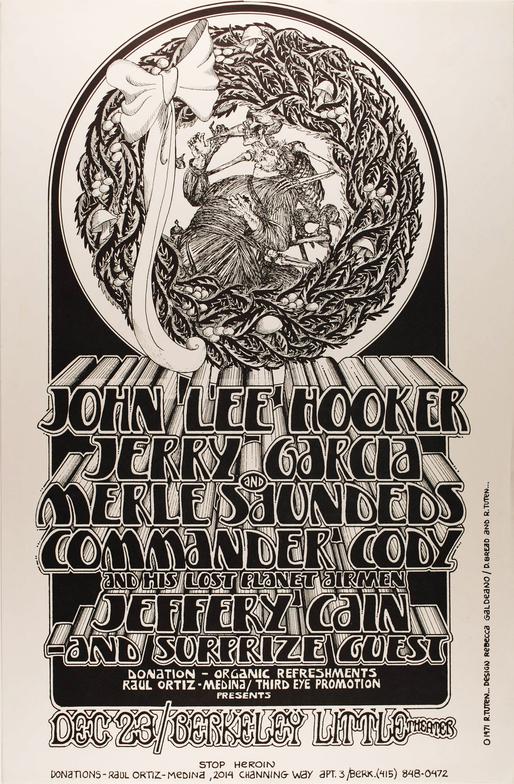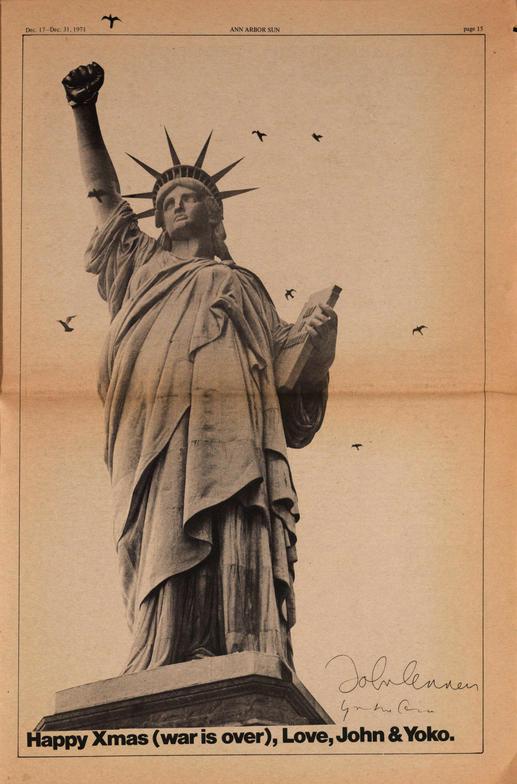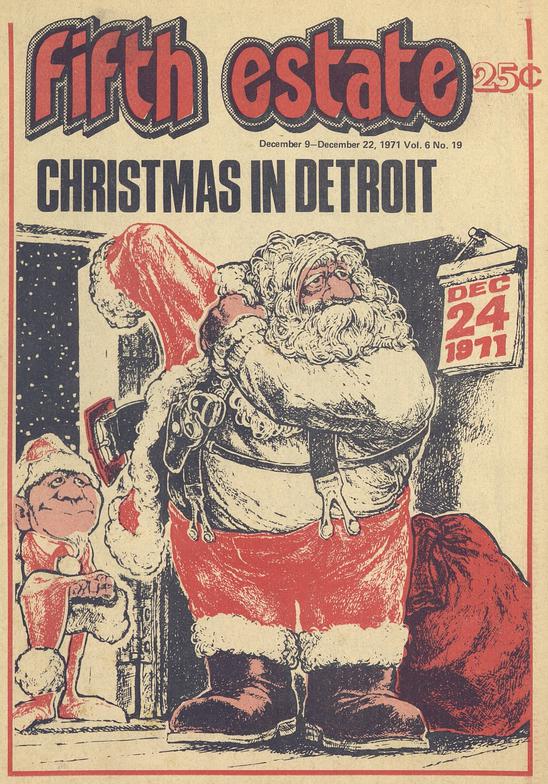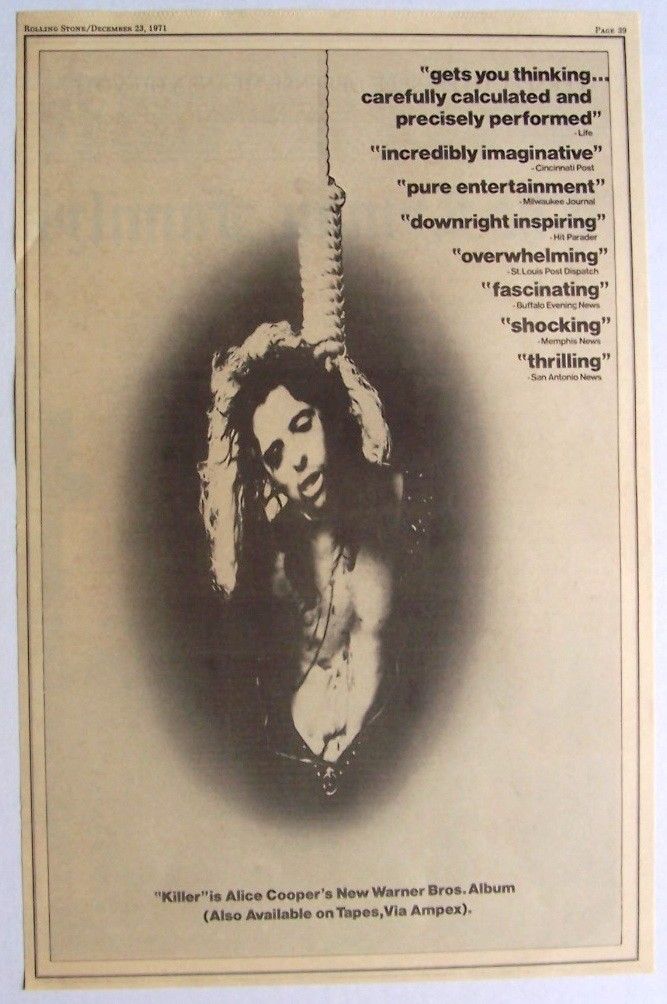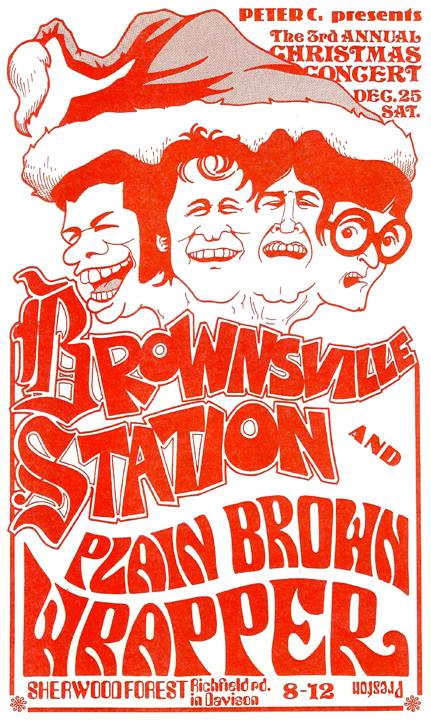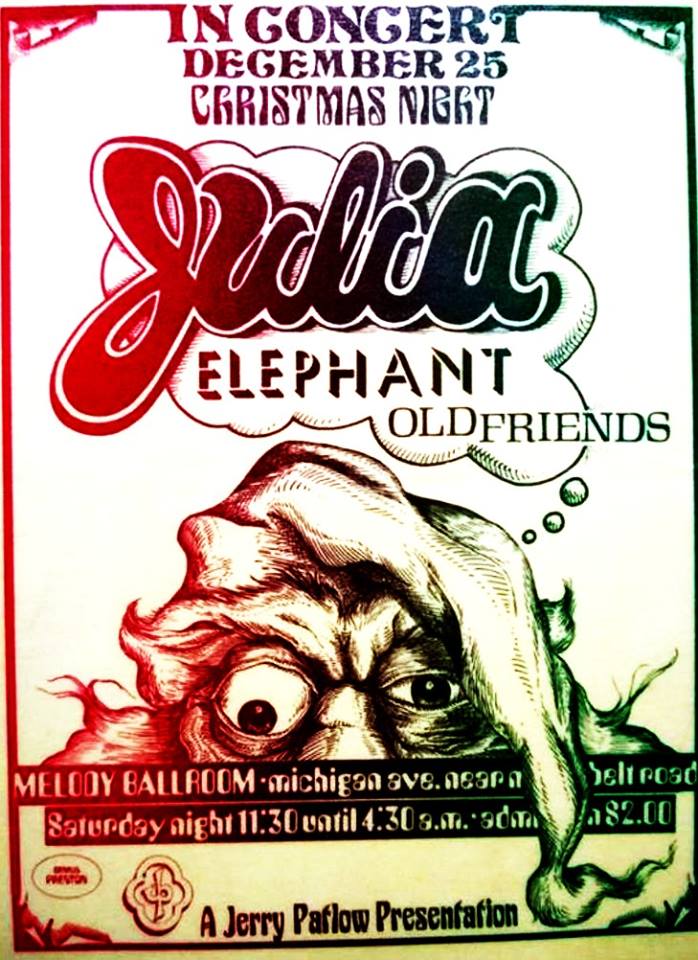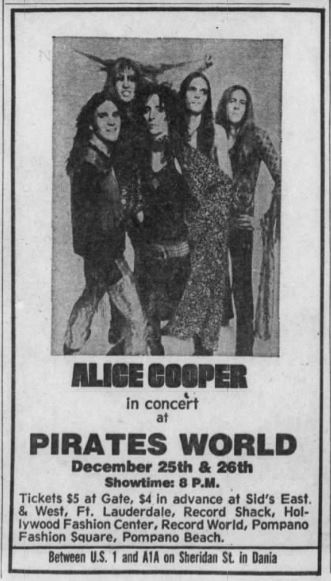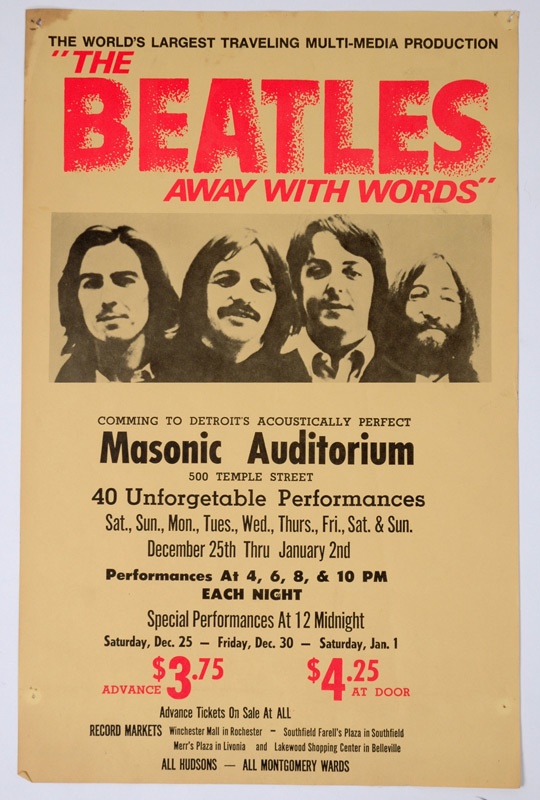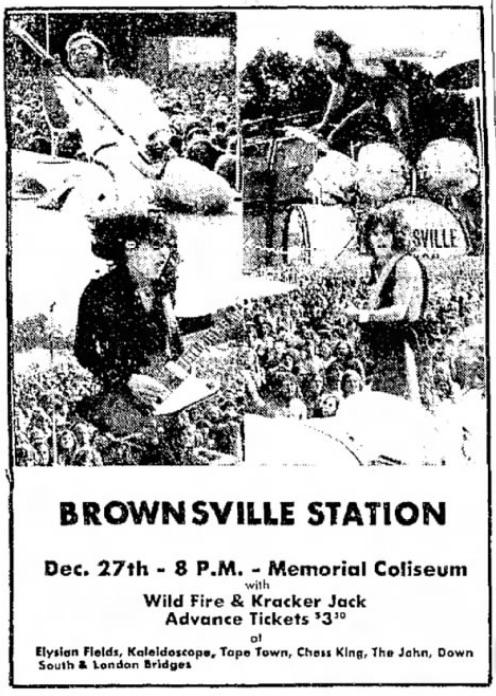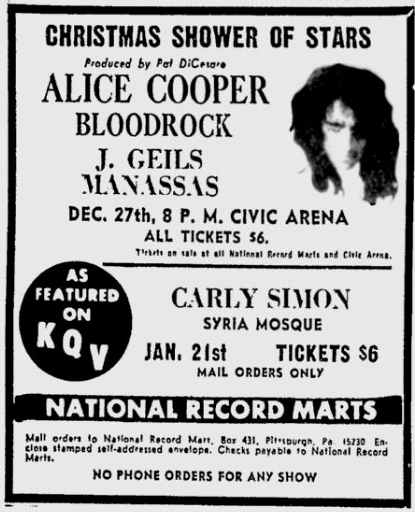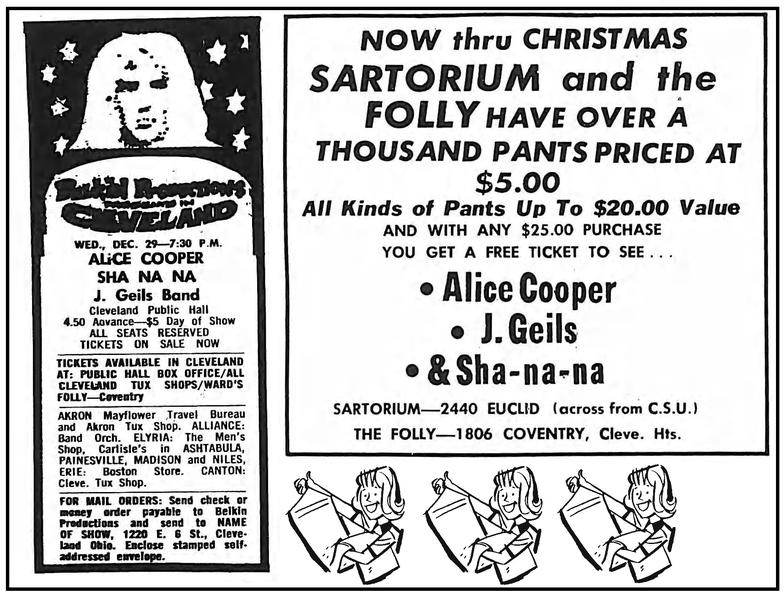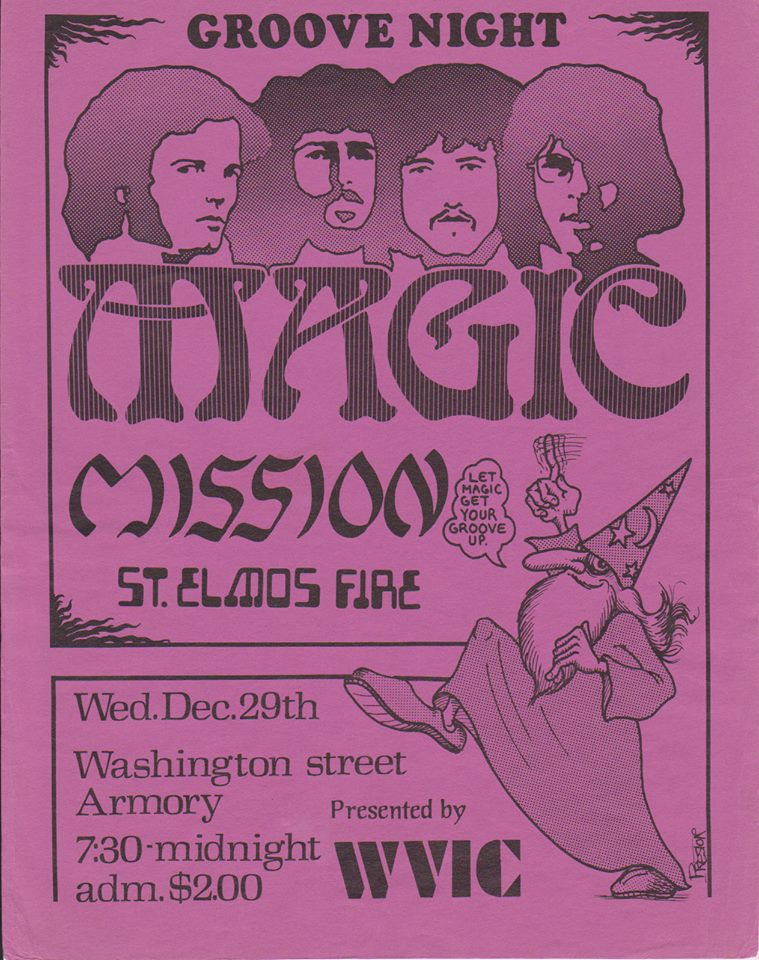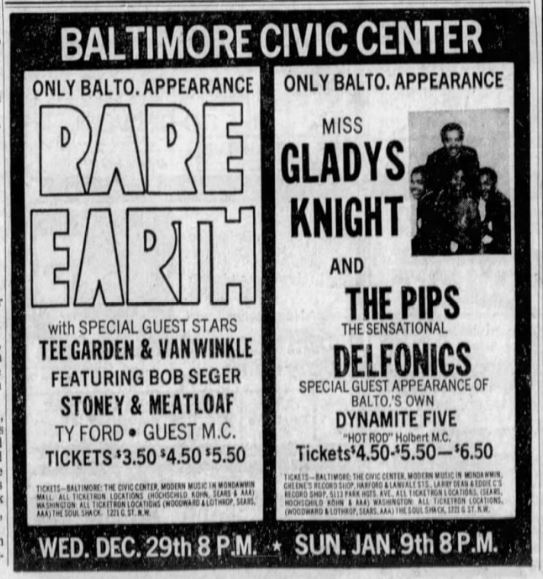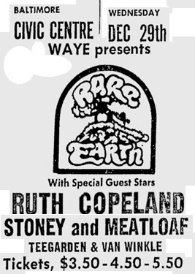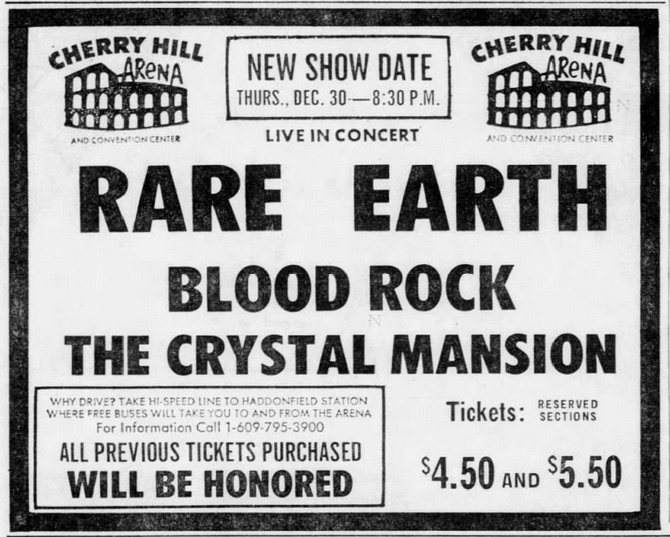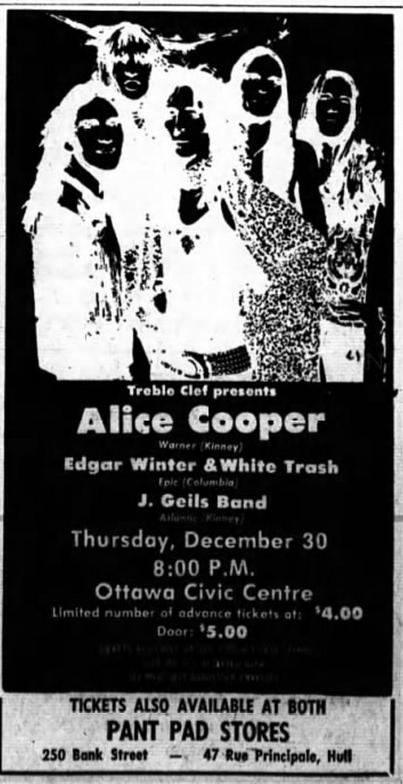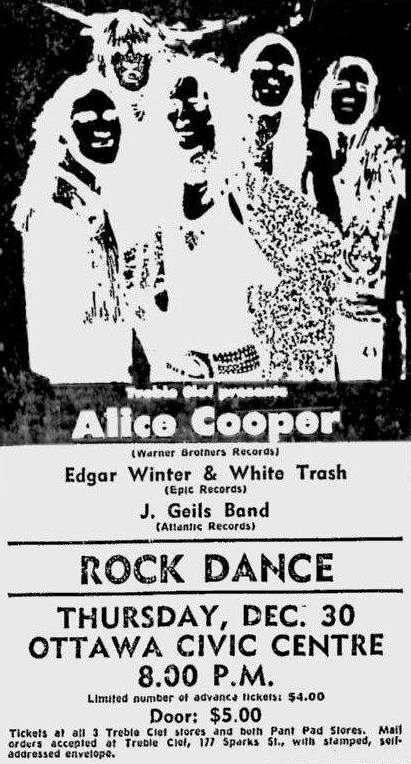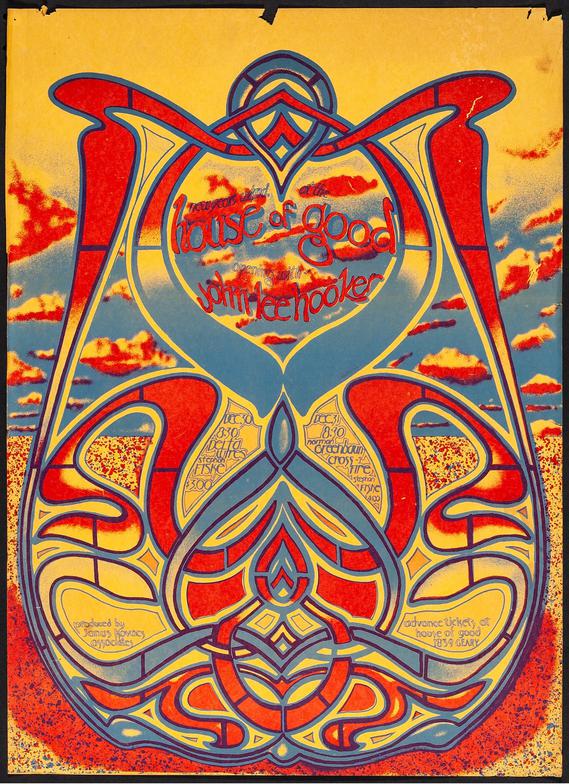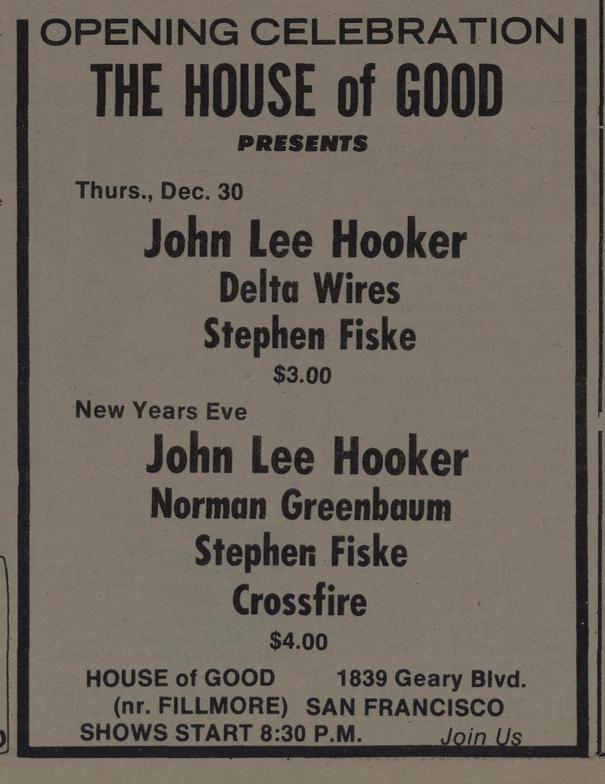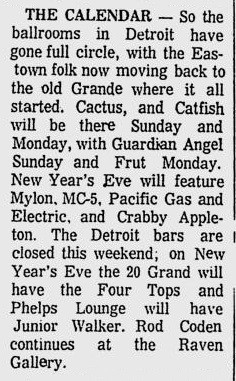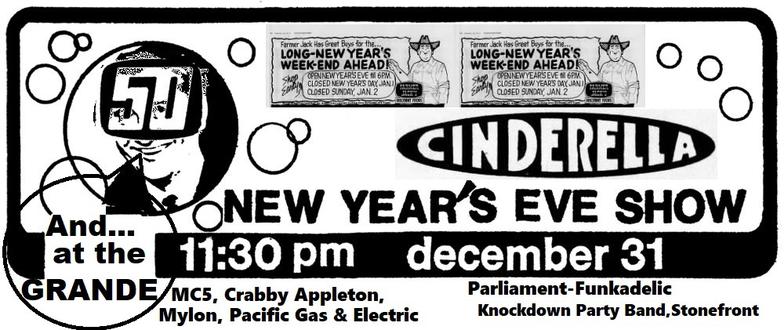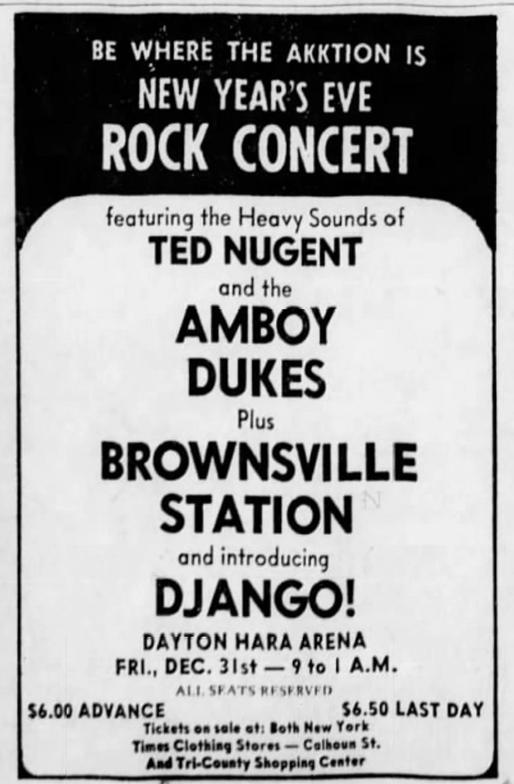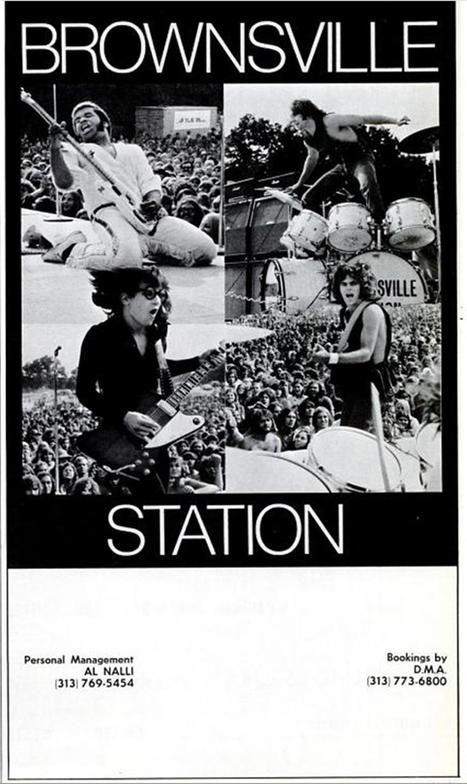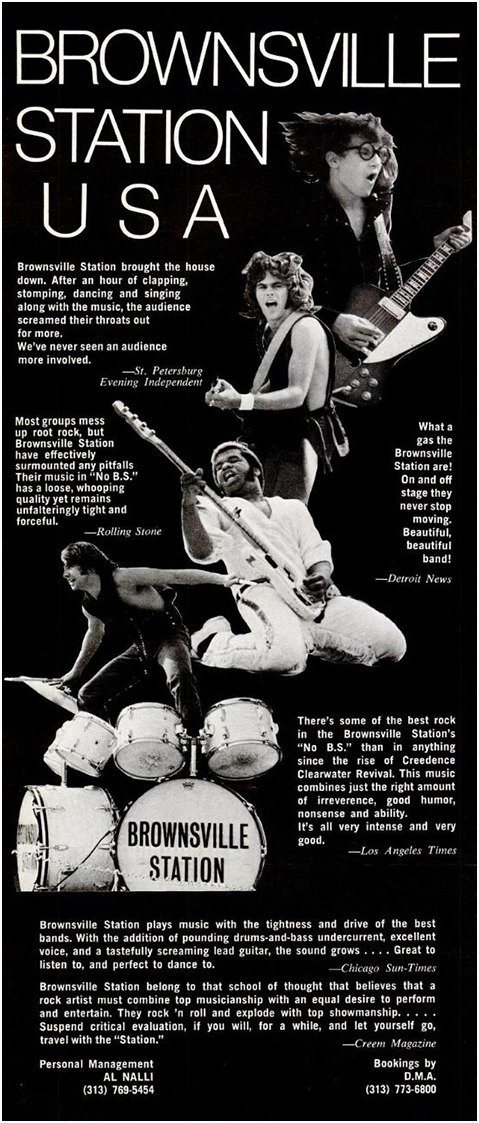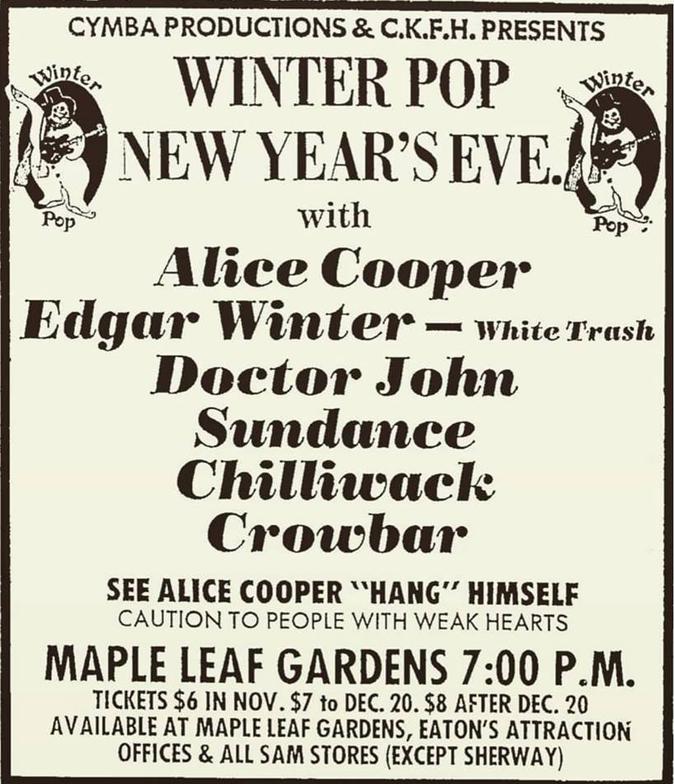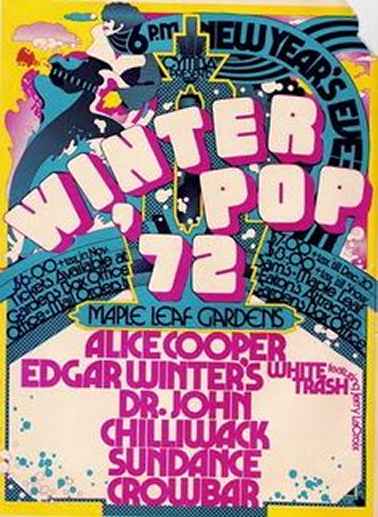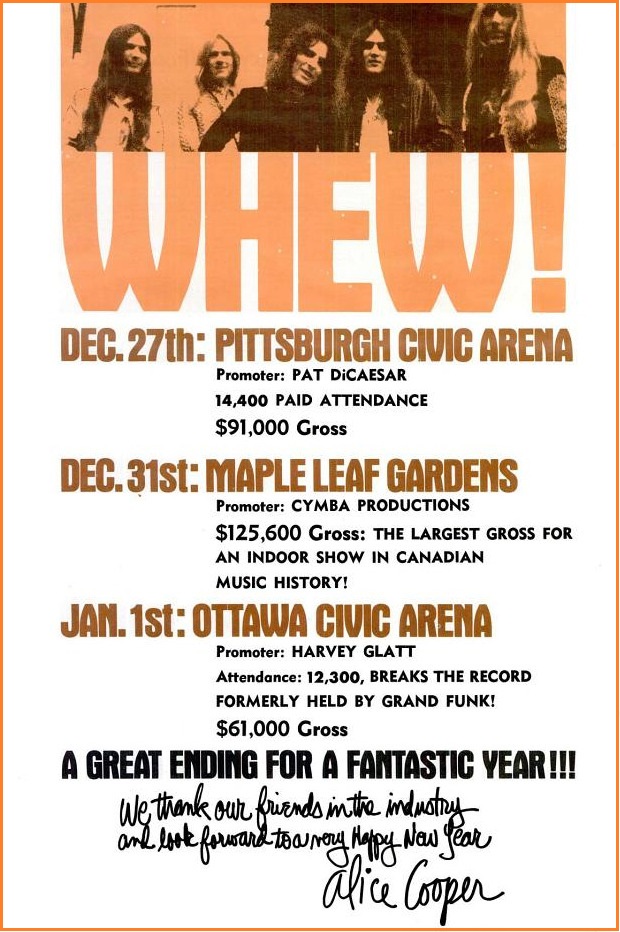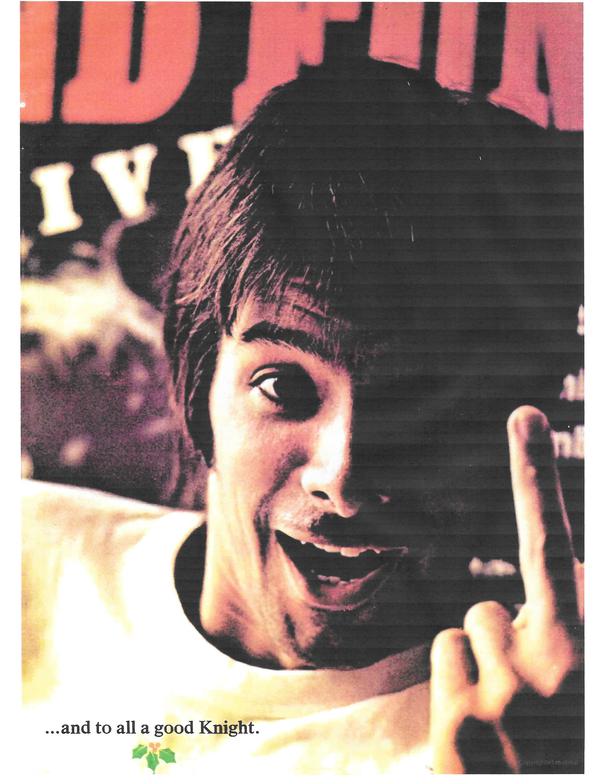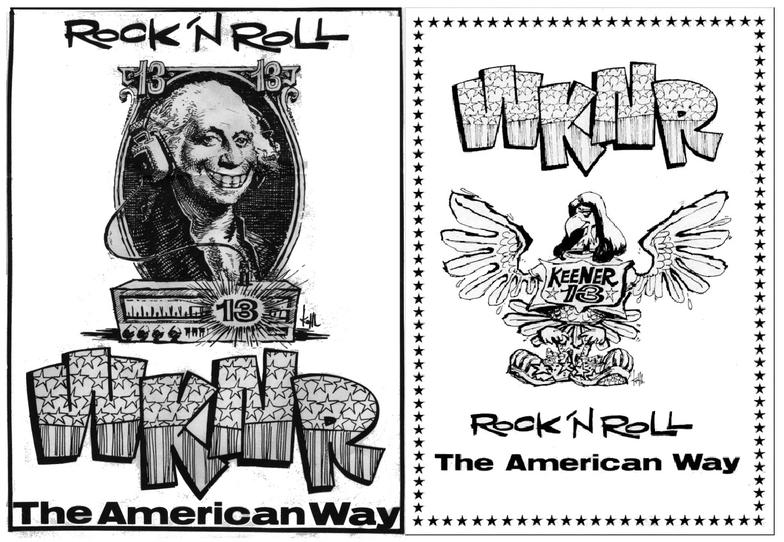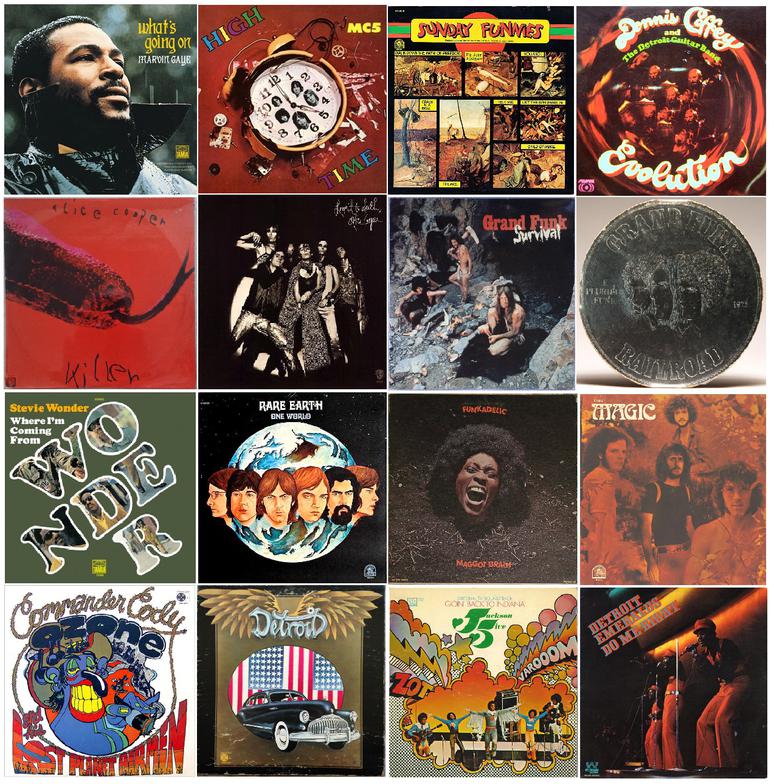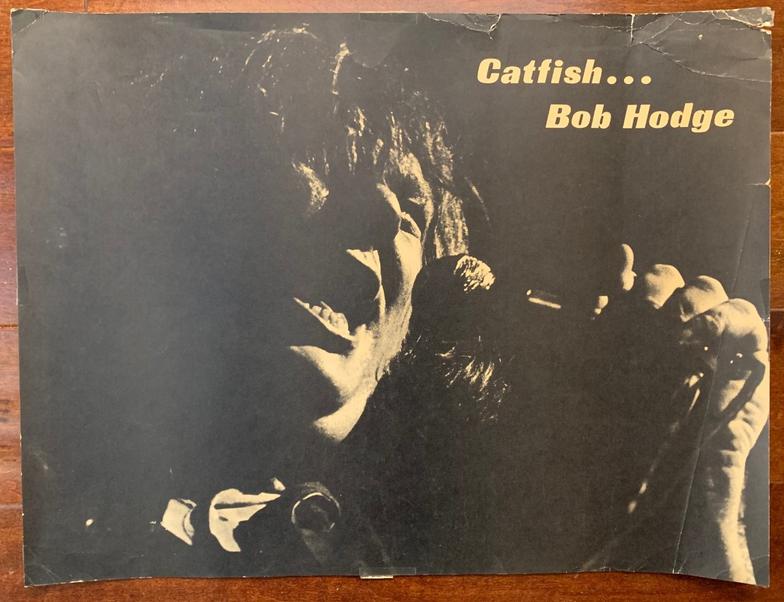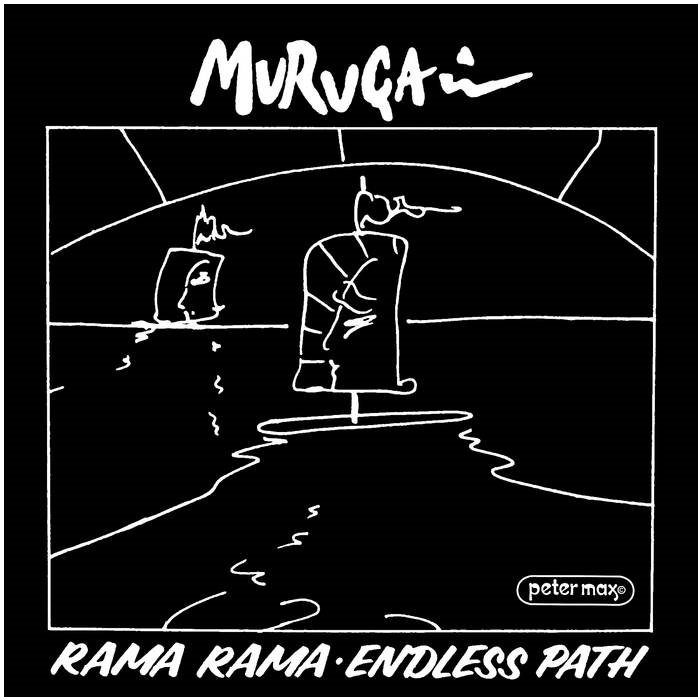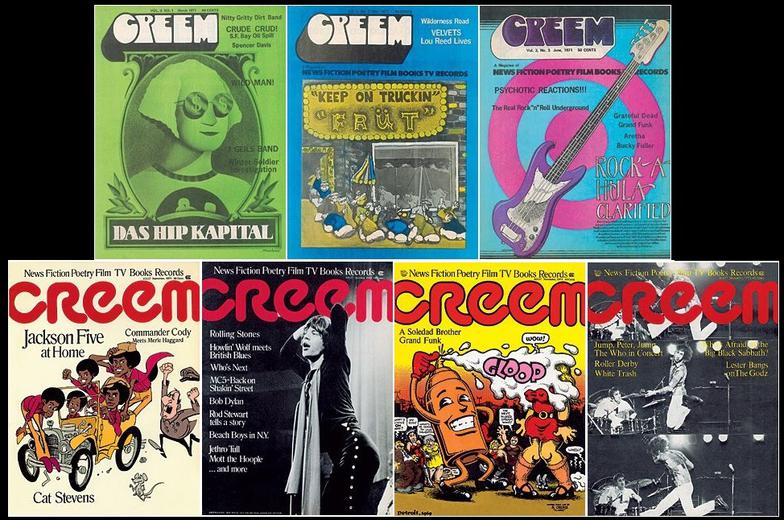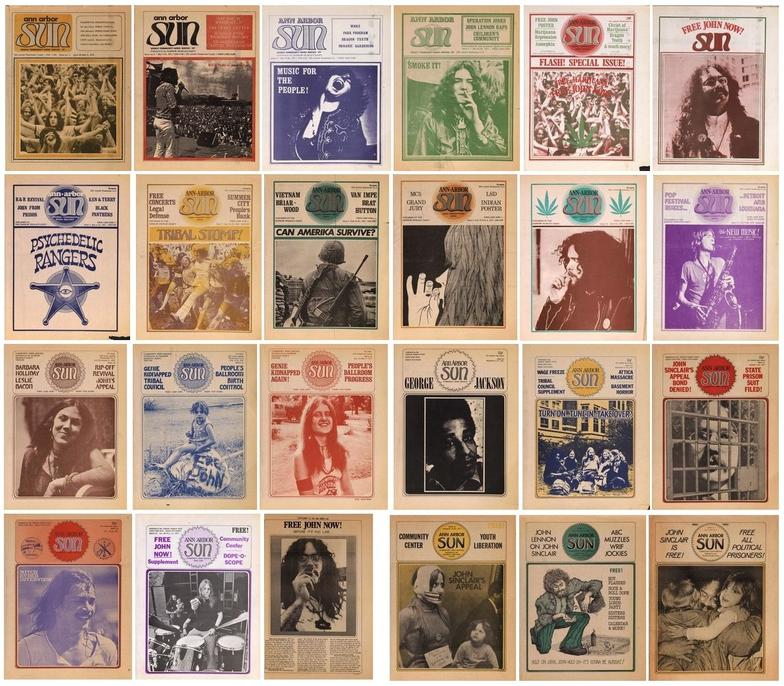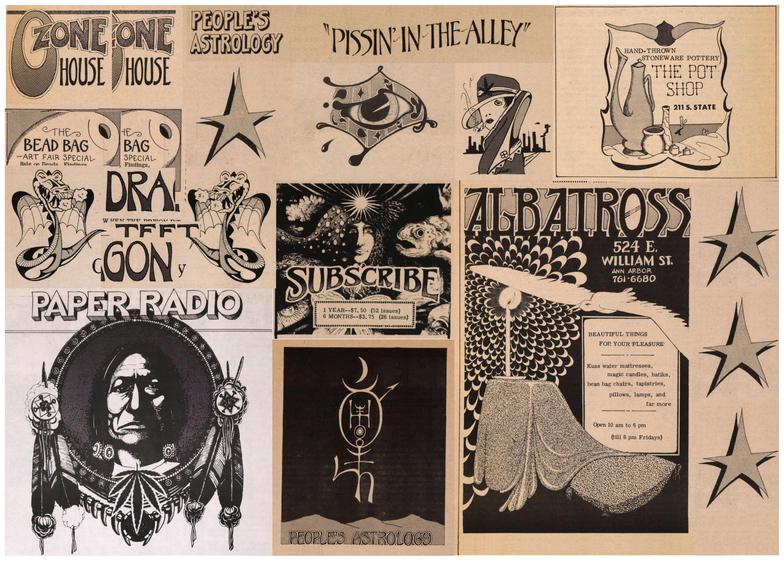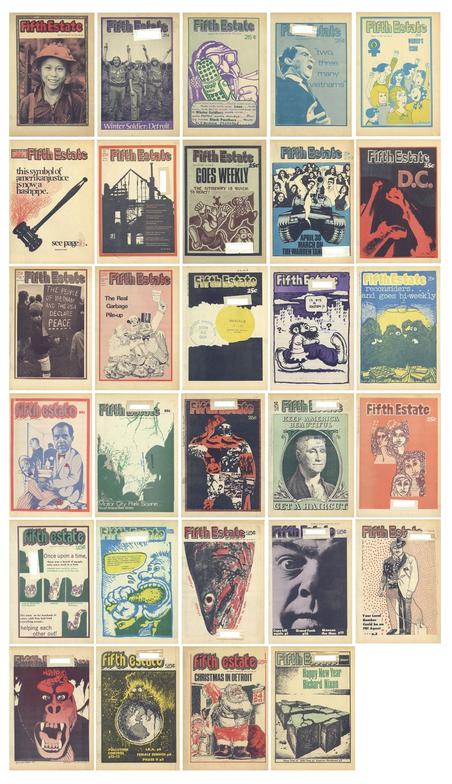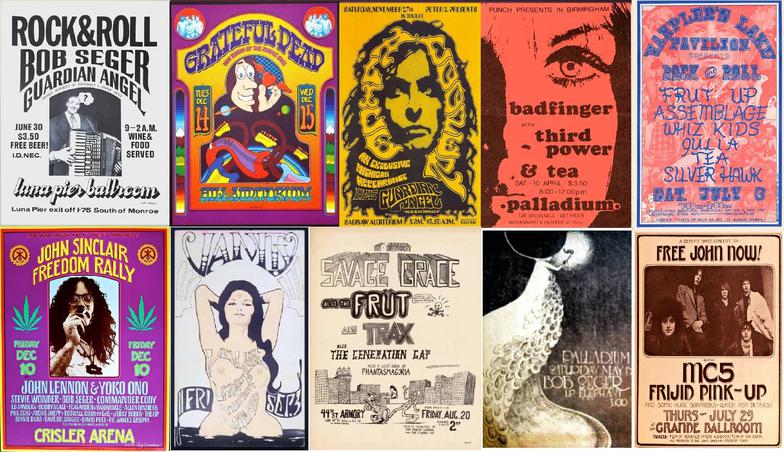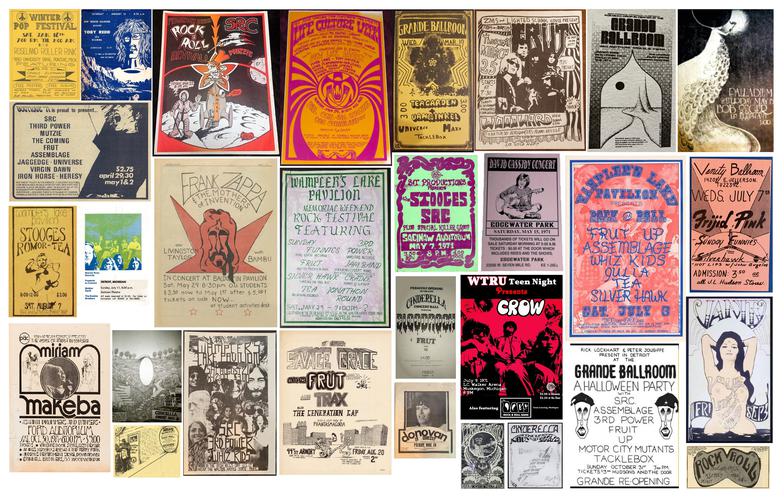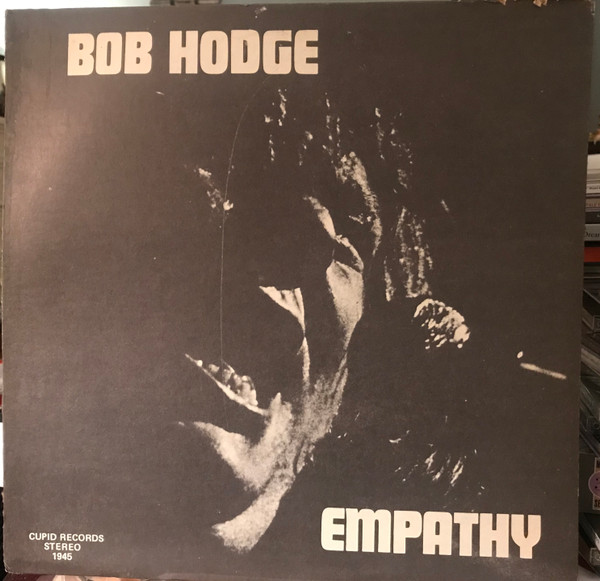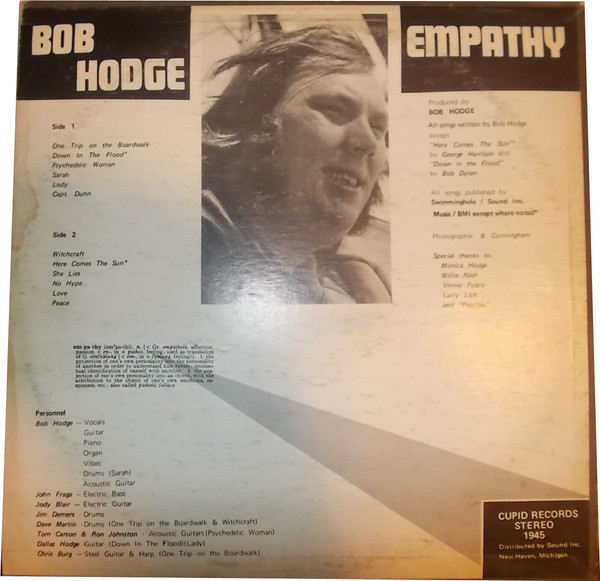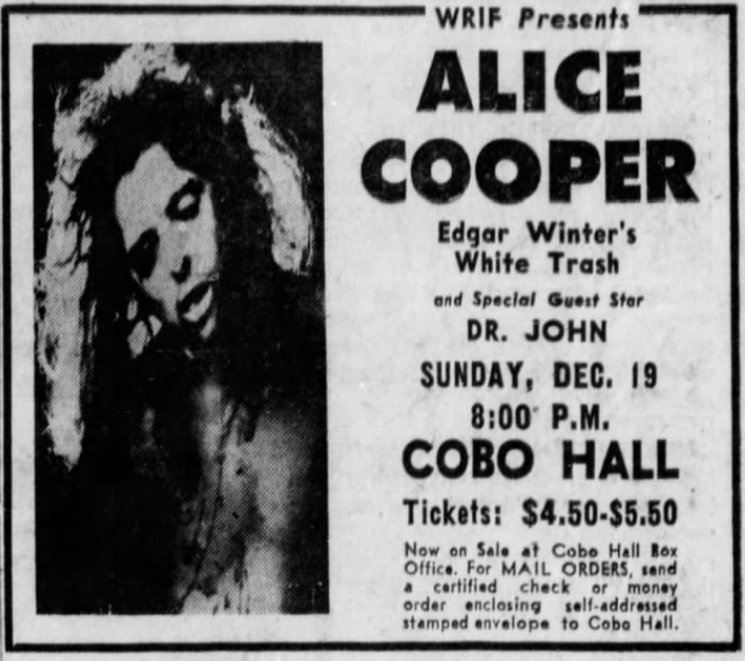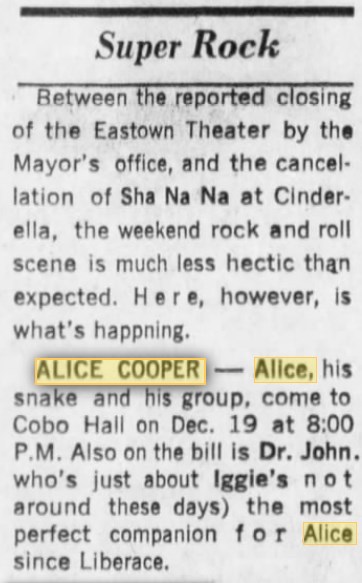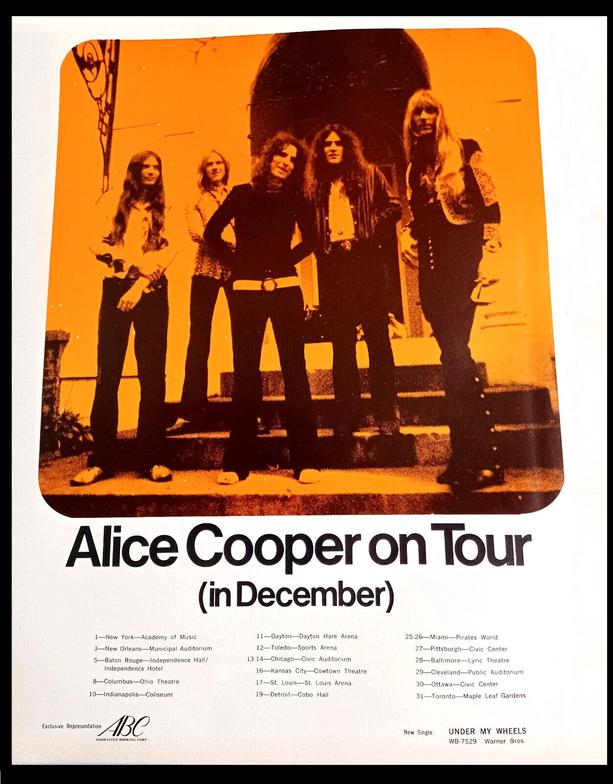Splatt Gallery
Double click here to add text.
Splatt Gallery's History of Michigan Concert Posters
Volume Seven - 1971 - Page Twenty-One
***********************************************************
Newspaper ad for Cactus at Ellis Memorial Auditorium in Memphis, Tennessee on December 19, 1971. This was the final show by the original line-up of Carmine Appice, Tim Bogert, Jim McCarty and Rusty Day, and as the ad indicates, the show was recorded, although it would not be released until 2004 as the album “Fully Unleashed: The Live Gigs”.
Cactus - Fully Unleashed: The Live Gigs (album) (2004)
https://www.youtube.com/watch?v=PjI2SjtUXKw&list=PL8a8cutYP7fpU559fGo0WZeqLc5mHFT22
Last cactus show 12/19/71
https://www.youtube.com/watch?v=xUjMCbZ2E60
The original Cactus line-up recorded three albums and about a half-dozen singles during their two and a half years. The albums are shown above along with a collection of picture sleeve singles released by the original line-up of the band Cactus, 1970-1971.
Poster by an unknown artist R. Gilreath for the Cinderella “Theater” in Detroit, Michigan, December 21, 1971, a benefit for the Alexander House with Frut, Harvey Khek, the Performers, and the Unmentionables.
Poster by Randy Tuten and Rebecca Galdeano for a show with John Lee Hooker, Jerry Garcia and Merle Saunders, Commander Cody & his Lost Planet Airmen, Jeffery Cain and others in Berkeley, California on December 23, 1971.
Annual holiday greetings from John Lennon and Yoko Ono in the December 17, 1971 issue of the Ann Arbor SUN, and this year, a song to go with it.
John Lennon & Yoko Ono - Happy Xmas (War is Over) (1971)
https://www.youtube.com/watch?v=z8Vfp48laS8
Cover of the December 9, 1971 issue of the Fifth Estate newspaper, by an unknown artist, “Christmas in Detroit”.
Full-page ad Alice Cooper’s “Killer” album from the December 23, 1971 issue of Rolling Stone magazine with the image from the 1972 poster calendar that came with the album cover.
Dennis Preston’s Christmas Concert poster for Brownsville Station and Plain Brown Wrapper at the Sherwood Forest in Davison, Michigan, December 25, 1971. As noted on the poster, this was Peter Cavanaugh’s third annual Christmas concert at the Sherwood Forest. We know that the 1969 show was headlined by Bob Seger and that Brownsville Station also headlined the 1970 show, but unfortunately, we have not found posters for either of those two.
Dennis Preston’s second Christmas poster for 1971, for the Melody Ballroom in Inkster, Michigan, with Julia, Elephant, and Old Friends, December 25, 1971.
Newspaper ad for Christmas in Florida for Alice Cooper, with two shows at Pirates World in Dania, Florida, December 25-26, 1971.
Poster for “The Beatles Away With Words”, a highly over-hyped “multi-media” show that was essentially a cheesy slide show with overly loud music, at the Masonic Auditorium in Detroit, Michigan, that opened on Christmas Day, December 25, 1971 and ran for 40 performances until New Year’s Day.
Poster/ad for Brownsville Station headlining a show in Corpus Christi, Texas on December 27, 1971.
Alice Cooper was the headliner of the “Christmas Shower of Stars” in Pittsburgh, Pennsylvania on December 27, 1971, including Manassas, J. Geils, and Bloodrock.
Newspaper ad for Alice Cooper in Cleveland, Ohio on December 29, 1971, with J. Geils Band and Sha-Na-Na, along with a clothing store ad that was offering a free ticket to the show with a $25 purchase of pants.
Dennis Preston poster for the Washington Street Armory in Lansing, Michigan, December 29, 1971. Bands were Magic, Mission, and St. Elmo’s Fire
An all-Michigan bill in Baltimore, Maryland, December 29, 1971, with Rare Earth, Teegarden & Van Winkle featuring Bob Seger, and Stoney & Meatloaf. Gladys Knight & the Pips appeared a few weeks later.
Poster for the all-Michigan bill in Baltimore, Maryland, December 29, 1971 with the addition of Ruth Copeland to the line-up of Rare Earth, Teegarden & Van Winkle (featuring Bob Seger), and Stoney & Meatloaf.
An ad for Rare Earth at the Cherry Hill Arena in Cherry Hill, New Jersey on December 30, 1971, (rescheduled from December 26th).
Poster for Alice Cooper in Cleveland, Ohio on December 29, 1971.
Two ads for Alice Cooper in Ottawa, Canada on December 30, 1971.
This absolutely gorgeous poster is often misidentified as being from any year from 1967 through 1972, however, based on a corresponding print ad in the Berkeley Barb newspaper, the correct dates are December 30-31, 1971 for John Lee Hooker at the House of Good.
The line-up for the first night was John Lee Hooker with Delta Wires and Stephen Fiske, and on the second night, New Year’s Eve, it was John Lee Hooker with Norman Greenbaum, Stephen Fiske, and Crossfire.
One of San Francisco’s most storied addresses, 1839 Geary Street was situated in-between Bill Graham’s Fillmore Auditorium and the Alfred Pike Memorial Scottish Rites Temple, which was the headquarters of Jim Jones’ infamous People’s Temple until they moved to Jonestown, Guyana, and departed the earth in a mass suicide in November, 1978.
In 1972, the temple at 1839 Geary was converted into an art gallery/music hall, called the “House of Good”, as it is called in the above poster. Although it drew the attraction of the Tubes’ drummer Prairie Prince, who air-brushed the interior wall murals, and the future disco star Sylvester and his performance friends, The Cockettes, with their rumored, legendary orgies, it was not a successful venture. There are some accounts that cast doubt as to whether the show on the poster actually took place, as well as accounts that it did.
Jerry Garcia used it as a rehearsal and performance hall in 1977, but it saw its most activity later, as a punk rock mecca, known simply by the address “1839 Geary”. One of its most famous shows was a word-of-mouth 1979 concert by The Clash that was advertised only by graffiti around town (which, as poster fans, we find to be hilariously sublime).
The print ad in the December 24-30, 1971 issue of the Berkeley Barb newspaper, finally nailing down the correct year for these two concerts at the House of Good.
A blurb in a newspaper events calendar that reads, “So the ballrooms in Detroit have gone full circle, with the Eastown folk now moving back to the old Grande where it all started.” It described the line-up for two shows at the Grande Ballroom, December 26-27, 1971, with Cactus and Catfish on both nights, and with Guardian Angel and Frut on the first and second nights respectively.
The ad also describes the up-coming line-up for New Year’s Eve, with the interesting comment that Detroit bars closed for Christmas.
These were the first shows at the Grande Ballroom since Halloween.
Shortly after these shows, guitarist Jim McCarty quit Cactus and returned to Detroit. Cactus vocalist Rusty Day was fired shortly after that and he also returned to Detroit. Carmine Appice and Tim Bogert enlisted a set of replacements for one more Cactus album, and then they finally teamed up with Jeff Beck, which had been their original intention before Cactus, to form Beck, Bogert & Appice.
Cactus – Mean Night in Cleveland
https://www.youtube.com/watch?v=NTuoMM20LA4
The regrettable lack of reliably regular posters in Detroit since the decline of the Grande Ballroom, there were all too few posters made for the run of great shows from 1970 to 1971, particularly at the Eastown Theater. Apparently, the only way people could find out about these shows were in the small print of the newspaper calendar sections. So, we’re forced to create our own lousy mash-up to document two great New Year’s Eve shows, December 31, 1971 - the MC5 at the Grande Ballroom, and Parliament-Funkadelic at the Cinderella.
The New Year’s Eve show at the Grande Ballroom featured the MC5 with Crabby Appleton, Mylon, and Pacific Gas & Electric. The same line-up performed on the night of New Year’s Day, January 1, 1972.
Michigan bands Ted Nugent & the Amboy Dukes, and Brownsville Station rang in the New Year in Dayton, Ohio, December 31, 1971.
A pair of promo ads/flyers for Brownsville Station with original drummer T.J. Cronley and original bassist Tony Driggins, both of whom had left the band by the end of 1971.
Alice Cooper rang in the New Year at the Winter Pop New Year's Eve at the Maple Leaf gardens in Toronto, Ontario, Canada, December 31, 1971.
“See Alice Cooper ‘Hang’ Himself – Caution to People with Weak Hearts”.
A fantastic poster for Alice Cooper at the Winter Pop Festival at Maple Leaf Gardens in Toronto, Ontario, Canada on New Year’s Eve, December 31, 1971. It was the largest gross for an indoor show in Canada up to that point ($125,000).
Alice Cooper finished the year with a flurry of shows that would keep them on tour at least through March 1972. As their final concert poster of the year said, “Whew!”
Things had pretty much deteriorated past the point of reconciliation between Grand Funk Railroad and manager Terry Knight. You may recall that GFR took out a full six-page ad in the year-end issue of Billboard magazine in 1970.
For the 1971 year-end issue, they repeated the same expensive ad buy, again with six full-page ads, but when you flipped the page after the last one, this full-pager from their now ex-manager was in your face.
WKNR “Keener-13” radio had taken over as the top station in Detroit since it launched on October 31, 1963, but by 1967 its dominance was threatened by CKLW in Windsor, Canada, just across the river, with its 50,000 watt broadcast power and its tendency to rob WKNR of much of its talent.
“Keener-13” continued to battle its Canadian rival, promoting itself as “Rock and Roll the American Way”, in these ads by an unknown artist - a not so subtle jab also instigated by a change in Canadian law in 1971 that required a certain amount of “Canadian content” in CKLW’s broadcast. Nevertheless, on April 25, 1972, “Keener-13” signed off for the last time, switching their format to “easy listening”.
1971 was a pretty good year for Michigan albums, landmark records from Marvin Gaye and Funkadelic, two solid releases each by Alice Cooper and Grand Funk Railroad, a fine, unfortunately final, album from the MC5, the stellar “Detroit” album from Mitch Ryder’s new group, and trend-setting music from Commander Cody & his Lost Planet Airmen, Stevie Wonder, Jackson 5, and Dennis Coffey.
Dennis Coffey – Evolution (album) (1971)
https://www.youtube.com/watch?v=i4jzpQ00o3U
A personality poster for Bob Hodge that shows him near his transition into Catfish Hodge. The image is the same as on the cover sleeve of the album “Empathy”, his only release as Bob Hodge, released in 1971.
The band Catfish boke up after the release of their second album “Live Catfish” recorded at the Eastown Theater in 1970 and released at the end of that year. However, the band is known to have performed shows up to the Spring of 1973, sometimes billed as Catfish featuring Bob Hodge. The “Live Catfish” album was released as Catfish featuring Bob Hodge.
An ad for Diversified Management (DMA) in February 1971 listed Bob Hodge as a client.
So, with that in mind, that beginnings and endings are often not so clear cut, here is the story from Derek Anderson’s music blog, that has the most detailed admiration for the band and the man:
“Bob realized this was about to happen (the break-up of the band Catfish), and had been thinking about embarking upon a solo career. He started recording his first album as Bob Hodge. Catfish Hodge had yet to make his debut. As Bob Hodge, he released “Empathy”, which was recorded in a small studio in Memphis and released on Cupid Records, which was Catfish’s own record label. Bob optimistically, had 500 copies pressed. “Empathy” passed most people by. So Bob decided it was time for a change and hopped on a plane to London.
“There was a reason for this. Bob was friendly with many British musicians, including the legendary Peter Green. In London, Bob stayed at the Earls Court hotel and wrote songs. Back then, Bob had hopes of become the next James Taylor. Instead, his music headed in a very different direction, when Bob wrote Boogie Man. So with another album written, Bob headed home, looking for a record deal.
“Since Bob had been away, Detroit had changed. Motown had followed the sun to Los Angeles. This was now the age of the major label. No longer were independent labels thriving. Many were struggling to make ends meet. One independent label bucked the trend, Westbound Records.
“Founded and run by Armen Boladian, Westbound Records and its subsidiary Eastbound Records were doing well. They were home to Denise LaSalle and The Detroit Emerald and Bob decided to visit Armen Boladian. He’d heard “Empathy” and liked what he heard, and decided to take a chance on Bob. He gave him $500 and told him to record some demos.
“Five songs were recorded at a small studio owned by a local band SRC. Then Armen wanted to see Bob play live. Bob just so happened to be playing in a local club. So, Armen headed over to the club, accompanied by two members of Funkadelic, George Clinton and Calvin Simon. That night, Bob won over not just Armen, but the two members of Funkadelic. They encouraged Armen to send Bob to Toronto, where Funkadelic were recording “America Eats Its Young”. Armen agreed, and Bob headed to Toronto, where he recorded Boogie Man Gonna Get Ya.”
Here is a link to the whole blog page:
https://dereksmusicblog.com/2019/09/04/catfish-hodge-the-eastbound-and-westbound-years/
And here is a link to one of the tracks from the “Empathy” album:
Bob Hodge – Witchcraft (1971)
https://www.youtube.com/watch?v=MZq5b5ktoao
A Peter Max illustration on the picture sleeve for the single “Endless Path/Rama Rama” by Muruga Booker. Released in 1971, and co-produced by Don Fagenson (later known as Don Was), possibly his earliest production work.
Muruga – Endless Path (1971)
https://www.youtube.com/watch?v=I_8iOhNy7cY
Muruga – Rama Rama (1971)
https://www.youtube.com/watch?v=yIKMphVCerw
Our year-end round-up of the CREEM magazines issued in 1971. There were only seven issues, the first half with the magazine’s sixth logo, and the second half with what would be the final logo, designed by Bob Wilson. The June issue, the last of the old logo, had the gorgeous Gary Grimshaw cover and was the first issue with Lester Bangs on the staff. For the November issue, Wilson colorized the Robert Crumb cover from Issue #2, April 1969.
Six months after the final demise of the SUN newspaper, the paper was re-born as the Ann Arbor SUN in April 1971. It began as a weekly, but switched to bi-weekly (every two weeks) in mid-July.
The “Central Committee” of the new Rainbow People’s Party (successor to the White Panthers) jointly edited the first 17 issues. In total, there were 24 issues in 1971, all shown above.
The Central Committee was comprised of John Sinclair, Peggy Taube, Gary Grimshaw, David Fenton, Genie Plamondon, Leni Sinclair, Pun Plamondon, Frank Bach, and David Sinclair as Chief of Staff.
There was a SUN staff of Bill Goodson, Chris Shondell, Ann Hoover, Marsha Rabideau, Barbara Holliday, Matt Lampe, Linda Karson, John Collins, and Joe Tiboni. With the October 1st issue, editorship was transferred from the RPP Central Committee to some of these staff members.
The majority of these covers featured photographs by David Fenton, there was one with a Gary Grimshaw illustration of the Psychedelic Rangers logo, one with an illustration signed by “phreaque” that may have been Mike Brady, and one with a Grimshaw-like illustration by George Pennewell from the magazine Good Times of a profile of a toker, the issue following that one had a photo of Pun Plamondon striking the same pose.
For a large part, these issues were almost a family diary of the members of the Rainbow People’s Party and their cause celeb to free John Sinclair from prison, a goal that was accomplished by the time of the final issue from this lot.
A collage of Gary Grimshaw artwork from the 1971 issues of the Ann Arbor SUN newspaper.
A collection of cover art from the 1971 issues of the Fifth Estate newspaper in Detroit, Michigan.
Year-end wrap-up with our ten favorite posters for the year. These are the picks for 1971:
Bob Seger & Guardian Angel – Luna Pier Ballroom – 06/30/71 – artist Jap Studios
Grateful Dead – Hill Auditorium, Ann Arbor – 12/14/71 – artist Gary Grimshaw
Alice Cooper – Saginaw Auditorium – 11/27/71 – artist Dennis Preston
Badfinger – Birmingham Palladium – 04/10/71 – artist Matthew Radowsky (Matt Rock)
Wampler’s Lake Pavilion – 07/03/71 – artist unknown
John Sinclair Freedom Rally – Crisler Arena, Ann Arbor – 12/10/71 – artist Gary Grimshaw
Velvet Underground – Vanity Ballroom, Detroit – 09/03/71 – artist unknown
Savage Grace – 44th St. Armory, Grand Rapids – 08/20/71 – artist Park Press (?)
Bob Seger – Birmingham Palladium – 05/15/71 – artist unknown
MC5 – Grande Ballroom, Detroit – 07/29/71 – artist Gary Grimshaw
We have documented about 280 Michigan concert posters for the year 1971. Of those, about 80 were by “an unknown artist”. Some of the unknown artist posters for 1971 are shown above.
It actually took us a bit by surprise to see we've gone through twenty-two years of history. Just for fun, we've picked one poster from each year, it's slim pickings for the first few, and an abundance of riches in the later years, but strictly keeping to just one for each year, it's not too bad of a story.
1949 - Ukrainian Bandurist's Chorus - Masonic Auditorium - 10/02/49 - we were tempted to pick an ad from the fabulous Flame Show Bar since this is the year it opened, but the Ukrainian Bandurist's Chorus had been kicking out the jams since 1918 in Ukraine, and in 1949 they escaped the persecution of the Soviets with the assistance of allied forces who brought them out of refugee camps to establish a new home base in Detroit, Michigan.
1950 – Jackie Kannon - Club Gay Haven - 07/03/50 – the Club Gay Haven gains more significance in 1954, the picture is of comedian Jackie Kannon, not Sonny Dunham, our episode went into some detail about Kannnon and the Rat Fink room.
1951 - Elliot Lawrence Orchestra - Grande Ballroom - 01/05/51 - near the end of the great dance hall era, a venue that will become a main character
1952 – Dairy Worker’s Hall – All Star Hillbilly Show & Dance – circa 1952 – still more research needed in this year, but the roots of Detroit’s first rock stars.
1953 – Bunny Paul – Falcon Lounge – circa 1953 – one of favorite stories to have discovered, the quite remarkable Ms. Bunny Paul.
1954 - Bill Haley & his Comets - Club Gay Haven - 11/08/54 - Detroit-native (Highland Park) Bill Haley moved to Pennsylvania at age seven, where he later formed his band The Comets in 1952. "Rock Around the Clock" had been released as a B-side about six months before this seven-night stand at Club Gay Haven in Dearborn, Michigan, it would not become the world-wide hit until it was used in the 1955 movie Blackboard Jungle, but no doubt it was in his live act. We also believe that this run of shows were indeed the first rock and roll shows played in Michigan.
1955 –Bill Haley’s Comets – Broadway Capitol Theater – 08/08/55 – one of the first shows billed as a “Rock ‘n’ Roll” show, Bill Haley returns nine months after his shows at the Club Gay Haven, now a true “singing star”.
1956 - Elvis Presley - Fox Theatre - 05/25/56 - the King in his prime, in his first Michigan appearance, and a real nice poster.
1957 - Mickey Shorr Rock N’ Roll Show – Broadway Capitol Theater – 04/26/57 – not the best of the “floating heads” posters, but it’s Mickey Shorr, one of the true groundbreaking DJ’s.
1958 – WKMH Radio Ad – circa 1958 – better floating heads and DJ Robin Seymour on his way to city’s favorite on the radio station that would become WKNR “Keener-13” in 1963.
1960 - Autorama – Hunt Armory Pittsburgh – 09/23/60 - Stanley Mouse did not make concert posters until he moved to San Francisco in 1965, but he was already a teenage star with air-brush booths at State Fairs and Auto Shows all over the region, driven to them by his supportive parents, such as to this one in Pittsburgh, his parents also maintained and grew his mail order/head shop business set-up in Detroit, the “Mouse House”.
1961 - Arcadia Roller Rink - Christmas Dance - 12/25/61 - nice example of the colored boxing style posters, with a stellar line-up including John Lee Hooker, Temptations, Royal Jokers, and Ike & Tina Turner.
1962 – Motor Town Revue – circa 1962 – the first Motor Town Revue tour of Berry Gordy’s Motown stars. We would also be treated to an annual Christmas week homecoming shows at the Fox Theatre that produced gorgeous posters.
1963 - John Lee Hooker - Raven Gallery - 01/15/63 - the beginning of a three-week run, with a sweet poster possibly designed by the daughter of the owner of the Raven Gallery.
1964 - Rolling Stones - Olympia Stadium - 06/14/64 - first Michigan appearance by the Stones, three months later the Beatles made their Michigan debut at the same venue, but the Stones had a better ad. The Beatles may not have needed an ads since their arrival was front-page news for weeks, although tickets were still available the day of the show.
1965 - The Shangri-Las - Club Ponytail – 08/10/65 – an example from the myriad “teen clubs”, that had blossomed around the entire state, Club Ponytail in Harbor Springs near the northern tip of the lower peninsula was one of the swankiest and was a summer vacation of gigs for the Fabulous Iguanas, a high school band from Ann Arbor with a drummer named Jim.
1966 - MC5 - Grande Ballroom - 10/07/66 - the opening night of Russ Gibb's Grande Ballroom, the first poster by Gary Grimshaw - indisputable.
1967 - Belle Isle Love-In – 04/30/67 – an explosion of poster artists, at least a dozen that we’ve documented, but Gary Grimshaw again with his poster(s) for the First Detroit Love-In on Belle Isle. The posters came in the form of the new Sun newspaper which was a palette for more outstanding artwork from Grimshaw and others. Also marks a point when the Detroit Artist’s Workshop morphed into the Trans-Love Energies which morphed into the White Panther Party which morphed into the Rainbow People’s Party.
1968 - Bob Seger System - Fifth Dimension in Ann Arbor - 02/17/68 - the club that presented the Michigan debuts of The Who, Cream, and Jimi Hendrix, all documented with the distinctive classic poster work by club manager Mickey Kress. This is one of his more artistic and features a forever rising hometown star.
1969 - Eastown Theater - Grand Opening - 05/29/69 - although we lament that the Eastown never picked up the poster tradition of the Grande Ballroom, they did announce their opening night with this beautiful Masse-like poster by an artist that we still have not been able to specifically identify.
1970 - Goose Lake – 08/07/70 – there were many, many better posters in 1970, by an ever expanding group of talented artists, but there is probably no more significant event in Michigan rock and roll history, than this one-time only massive rock festival.
1971 - Alice Cooper - Saginaw Auditorium - 11/27/71 - the "warm-up" show before embarking on their world-wide "Killer" tour, leaving Michigan after a two-and-a-half year residence, poster by Dennis Preston, taking us into the future.
Volume Seven - 1971 - The End
Return to main History page - HERE
Alice Cooper with the final home-town show of the year, at Cobo Hall in Detroit, Michigan, December 19, 1971. It was at least their 12th Michigan show of the year, but with their move to Connecticut they would never play that frequently in the state again, and the days of gigs in the small intimate ballrooms were over.
During the two-and-a-half years of living in Michigan, they had played the Eastown Theater (at least 14 times), the Grande-Riviera, the Grand Circus Theater, the Birmingham Palladium (at least five times), the Silverbird Hideout, the Roostertail, Sherwood Forest in Davison, the Loft in Leonard, Michigan, the Carrawee Ballroom in Flat Rock, and Grandmother’s in East Lansing.
Alice Cooper – Desperado (1971)
https://www.youtube.com/watch?v=qHK3cCg8TOw
Full-page Warner Bros. Records ad with Alice Cooper tour dates, including a show at Cobo Hall in Detroit, Nichigan on December 19, 1971, at the bottom in the middle row.


